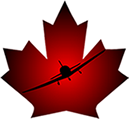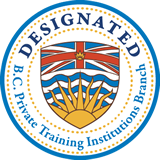 |
|
The Slip"On the other hand there is always a good chance of --Major Raoul Lufbery, Lafayette Escadrille, May 1918-- As Major Raoul Lufbery, a celebrated WWI American ace credited with 17 aerial victories over German aircraft on the Western Front, pointed out only a few days prior to his death, the slip can be a very useful manoeuvre. Unfortunately for the Major, when the fuel tank of his Nieuport 28 was hit on May 19, 1918 by tracer fire from a German Albatross, he ignored his own advice and jumped from the burning aircraft at 200’ apparently hoping to land in a nearby stream. He was impaled on a picket fence. If you spend any time flying with older pilots, those who learned to fly in the bad old days when an aircraft’s third wheel was normally bolted to the rear end rather than hanging down at the front end, you will likely have watched someone who was very familiar and comfortable executing slipping manoeuvres. Back in the day when flaps were an expensive complexity not seen on small training aircraft, slipping was both taught and learned thoroughly from the very first flights. Pilots were taught to use a slip to lose altitude, either straight ahead or in a turn and on landing to compensate for cross-wind drift. As a friend of mine said, when you’re flying a tail wheel aircraft with a gross weight of 1220 lbs, every landing is a cross-wind landing. If someone drops a sheet of plywood on a construction site across the road, you feel it. A slip is also a handy manoeuvre to just get a better view of something on the ground or above the wing or even to help you re-latch a door opened in flight. Modern training aircraft are almost universally equipped with flaps and most instructors learned to fly from instructors who learned to fly on tricycle gear aircraft, also equipped with flaps. Flaps are a great help when altitude must be lost; tricycle gear aircraft are not nearly as vulnerable to difficulties as conventional gear aircraft when landed somewhat askew in cross-wind conditions. Slipping has gently faded as a favoured technique. It is, however, still a very useful manoeuvre and quite elegant when performed correctly. Whether we are speaking about a side slip used to counteract cross-wind drift on landing, a forward slip used to lose altitude, or a slipping turn used to lose lots of altitude, the essential technique is the same. With a combination of aileron and rudder inputs, we induce the aircraft to fly sideways through the air. We transfer some of the lift from the wings to the fuselage and create a significant amount of drag in the process. When we use a slipping technique to counter cross-wind drift on landing, we point the nose of the aircraft with rudder input to keep the longitudinal axis of the machine parallel to the centre-line of the runway or landing area. We apply aileron to maintain lateral position. Rudder points the nose; aileron slides the aircraft right or left as needed. Of course, we use elevator and trim to control our approach speed and power to control our rate of descent. When using the slip to lose altitude, we normally enter from a power-off glide. All too often on a flight test, we see people enter a slip to lose altitude with cruise or only slightly reduced power. This defeats the technique. With enough power, we can fly the aircraft with full rudder and opposite aileron without losing any altitude at all. We establish the aircraft in a glide, normally at best glide speed as specified in the POH. Once in the glide, it is very important to establish a clear visual reference so we know where we are headed. I like to pick out some obvious and prominent feature on the ground ahead—about where we would touch down if we continued our descent—and maybe even say out loud or to myself, "That’s where I’m going." We also want to take note of the aircraft’s attitude. Once in a slip, depending on the aircraft we are flying, the airspeed indicator can become unreliable. The pitot tube and static port are now meeting the relative airflow at an unusual angle. If we work from the attitude of the aircraft by looking outside, we won’t be confused or fooled by inaccurate indicated airspeed readings. With our eye on our reference point and an appreciation of the attitude of the nose, we can apply aileron in the direction we would like to establish our slip. Left aileron results in a slip to the left and visa versa. We roll the aircraft with aileron and stop the turn with opposite rudder: roll left; right rudder. Roll right; left rudder. Particularly in the early stages of learning this manoeuvre, gentle application of control inputs is easier to understand. No big hurry. Strive for elegance rather than speed. As we enter the slip, the aircraft may have a tendency to raise its nose. We are increasing lift by exposing the whole side of the aircraft to the relative wind. Maintain the attitude we observed in the glide with elevator input. Keep our eye on our ground reference point so we continue to know where we’re heading. Many students are worried about stalling the aircraft and producing a spin because of the cross control inputs and have a tendency to point to nose excessively downward. This simply increases speed and reduces the effectiveness of the slip. Most light aircraft are very reluctant to spin from a slip. If you are really worried about it, give yourself plenty of altitude in a safe area and try it. Put the aircraft into a slip and gently raise the nose until she stalls. Most light aircraft will shake and buffet and lose altitude at a great rate, but will not show any interest whatsoever in entering a spin. In the early stages of learning a slip, I encourage students to use full rudder input and "steer" the aircraft with aileron. This simplifies things by giving the pilot only one input to worry about and control. Two variable variables result in just so many combinations that it’s easy to get confused. Keep things simple and success is more easily obtained. If there is a wind blowing, we normally set ourselves up with the lowered wing towards the wind. This is particularly important when using a slipping manoeuvre on landing. With limited altitude, we don’t want to increase our vulnerability by giving the wind an opportunity to get under the raised wing and toss us into an unusual and potentially dangerous attitude. To turn our side slip into a slipping turn, simply increase aileron input. A slipping turn can be a very effective tool for losing altitude in a hurry and can be a very nice little trick to store in our forced landing kit or our landing kit for fields with difficult or obstructed approach paths. We can really keep our base in close by making use of the slipping turn in an effective manner. Whether you are an experienced pilot or a new arrival to the activity, honing and developing your skills is not only an excellent plan, it’s a lot of fun. Slips can be extremely useful in a variety of situations. Familiarity and comfort with the manoeuvre is a fine addition to your repertoire. Flaps fail; cross-winds occur; engines catch fire; difficult situations arise. Keep your skills sharp and they will be there for you when you need them.
|


